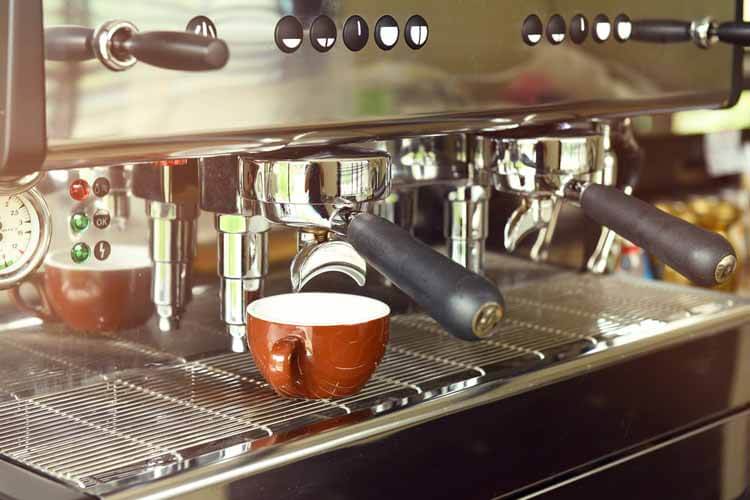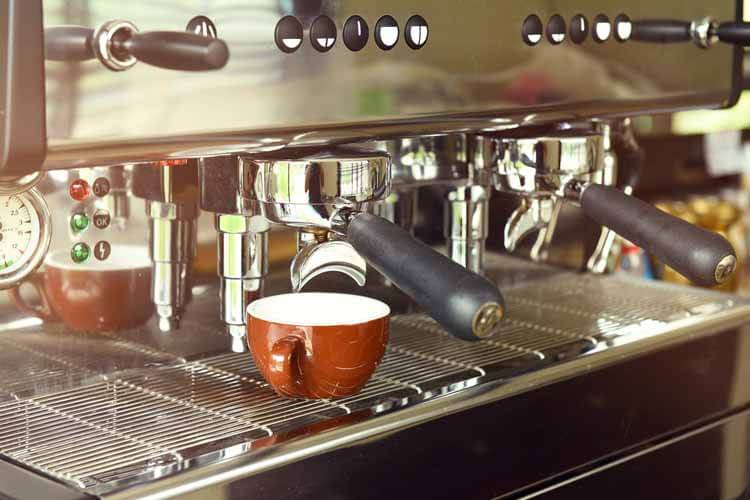As convenient as espresso machines are, working with coffee beans or grounds means making a mess. Coffee stains, residues, and milk-protein are just some of the ways your machine can get messy.
Keeping your machine clean is important as these will lower the lifespan of your machine and affect the taste of your coffee.
So now the question arises, how to clean an espresso machine? Don’t worry, as this article is here to provide you a detailed guide on how to keep your espresso machine clean and ensure your coffee tastes as good as ever.

Cleaning Equipment
There aren’t many things that you need to clean out your espresso machine, but some key pieces of equipment will greatly help with the cleaning process. These include:
- Nylon Brush
Coffee residue stuck to different parts can be difficult to dislodge. Nylon brushes have strong bristles, which are perfect for getting them off and cleaning your machine.
- Cleaning Rag
Cleaning rags, in general, help wipe and later dry the machine or parts that have been soaked during cleaning.
- Cleaning Solution
For breaking down oils from coffee beans, a cleaning solution is needed. You can buy and use a specially made coffee machine cleaning solution for this or make your own by mixing vinegar and water.
- Detergent
Detergent is also a good cleaning agent for cleaning out the filters and other parts of the machine.
- Descaler or Descaling Agent
Mineral build-up can happen in your espresso machine, which can result in a bad odor being emitted. It also affects the taste of your coffee. Descaling agents help prevent that.
Parts That Need to Be Cleaned
Although it’s good to wipe the dust off the surface of your espresso machine from time to time, there are several parts you need to pay attention to. These parts usually get the messiest, and you need to be careful when cleaning them. These include:
- Portafilter
All the grounds you use for your coffee don’t make it. Some get stuck in the portafilter and need to be scrubbed or cleaned out. Residue in this part will end up contaminating or affecting the taste of the batches of coffee you make later on.
- Group Heads
Since this is where the brewing takes place, a mess is inevitable. Not cleaning this will end up affecting the lifespan of your espresso machine and decrease the performance.
- Grinder
Some espresso machines have built-in grinders. Oil and residue are commonly found here, and it needs to be cleaned daily or after use.
- Steam Wand
If your espresso machine has a steam wand and you use it to steam milk, it will probably have milk protein on it. This can cause it to clog up and smell bad, so you will need to sanitize and wipe off the milk residue from it.
How to Clean Espresso Machine: Details Guide
To keep your espresso machine clean, there are several processes you need to follow. All of these serve the purpose of keeping your machine clean and functional. There are three processes, and they are detailed as follows:
Daily Cleaning
This procedure should be repeated daily, as the name suggests. It is a light cleaning procedure that helps to maintain your machine. The steps are:
- Take the portafilter off the group head by rotating it and loosening it. Remove the basket from it. Wash both the basket and portafilter with water, and then use a nylon brush to scrape off the residue.
- Use your nylon brush to clean and scrape off the coffee grounds from the group head. This will remove grounded coffee from the mouth of the group head.
- Temporarily seal the portafilter with a blind disk and lock it in place with the group head. Add water to the reservoir and then turn the machine on. This will cause water to run down through the group head into the filter and clean the interior.
Open the portafilter and let the water run out, then lock it back in place.
- Soak a rag or cleaning cloth in water and wrap it around the steam wand. Lightly press and bring it down the length and clean the tip. Take the cloth away, turn the steam wand on for a few seconds and then turn it off.
- For the grinder (if your espresso machine has one), you can dowse it with some water, swirl it, and then carefully remove it. Or an alternative is to use grinder burrs, which you can buy. Place a few of them inside the grinder and then turn it on.
This acting will ensure that any oil or residue is cleaned.
- Soak another cleaning cloth in some water and wipe the metal surfaces of your espresso machines to clean any stains or spilled milk.
Deep Cleaning
Deep cleaning is done at least once a month or every two weeks. This is important as daily cleaning won’t always clean out all the residues or coffee stains, and deep cleaning is needed. To perform this procedure, follow the steps below:
- First, you need to prepare the cleaning solution if you don’t have any coffee machine cleaner. You can do this by mixing some vinegar with warm water in a bowl.
- Remove and detach parts of the espresso machine, so you can better clean them separately. These include disassembling the portafilter, steam wand, and group head gasket. Refer to your instruction manual to properly know how to go about separating these parts.
- Pour the cleaning solution into different bowls for the different parts. Then place the parts into the cleaning solution bowls and let them soak. Make sure they are properly immersed and leave them for a few hours.
- Take the parts out and place them under a tap and rinse them with water. Clean them with a clean cloth and then let all of them dry.
- Reassemble all the parts of the machine carefully, making sure you do not miss any parts. Double-check for any missing parts and ensure they are all properly attached.
Descaling
After the deep cleaning process, descaling is often used to do a final proper washing. The benefit is to mainly clear the chemical content in an espresso machine and prevent contamination.
For this, you will need a descaling solution or descaler that is safe to use with your machine. Once you have that, follow the steps below:
- Open up the reservoir of your espresso machine and add clean water to it. Then, add some descaling solution mixing it properly. Reattach the reservoir with the current content in it.
- Soak a cloth with the clean water and descaling solution. Then press the soaked cloth to the steam wand and clean it properly. Make sure to soak and clean the tip and turn it on for a few seconds to flush the contents out.
- Use a cloth or rag with warm water to rinse the steam wand and ensure no traces of descaling solution is left.
- Place an empty container near the mouth or faucet of the portafilter. Plug your espresso machine in and let it run. This will cause the water and descaling solution to run through the interior of the machine and clean it.
- Turn the machine off and let it rest for 20 minutes.
- After 20 minutes, take the reservoir and fill it with warm water. Reattach it back to the espresso machine.
- Turn it on and let the warm water run through the machine. This will rinse the internals of the espresso machine. Remember to have a container at the end for storing the flushed out water.
Related Article: How To Test If I Got A Bad Pump In Espresso Machine
Conclusion
We hope that you found this guide on how to clean espresso machine helpful. Maintaining and cleaning an espresso machine will greatly help you in the long run, as it will keep your machine functional and keep your coffee tasting great.

